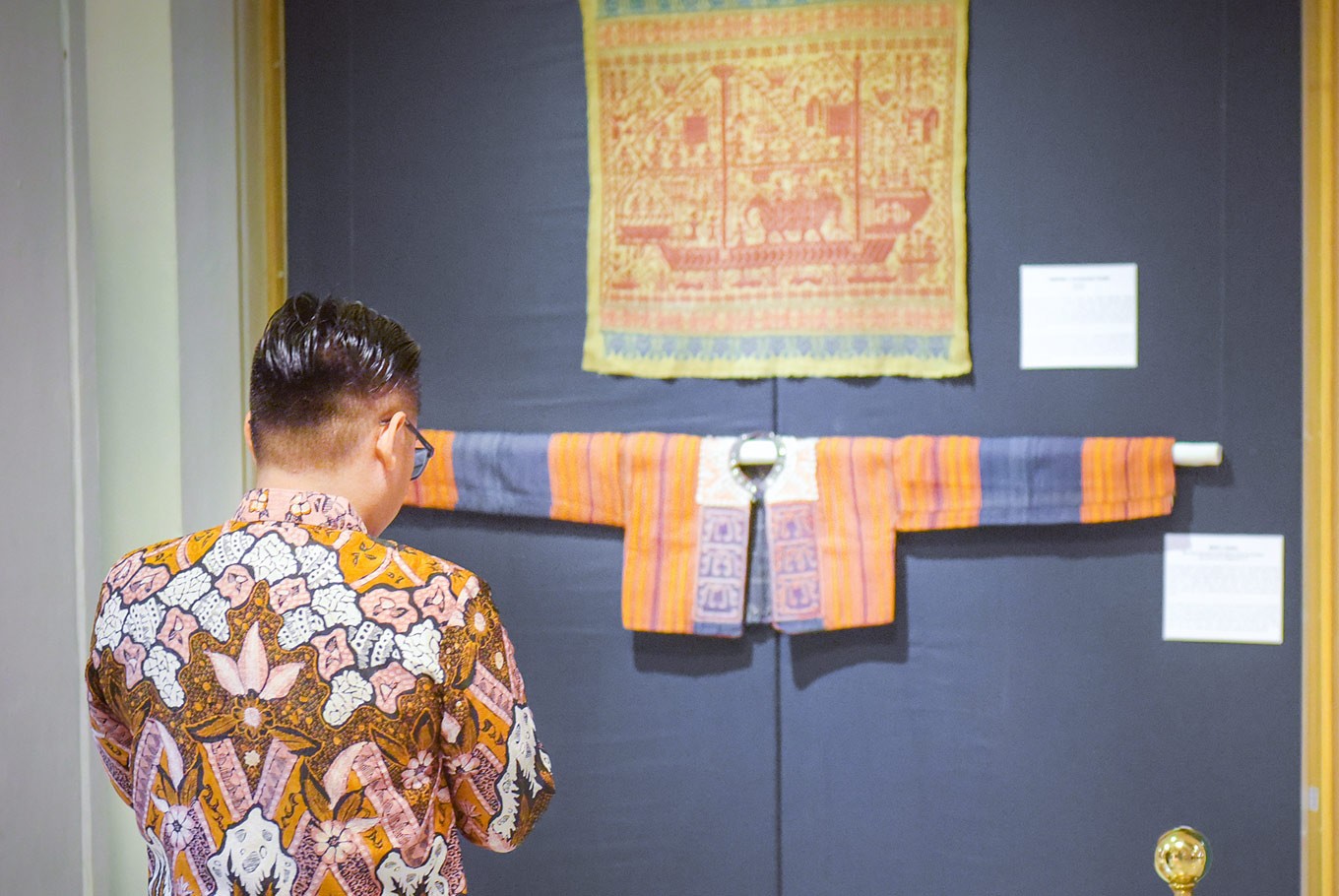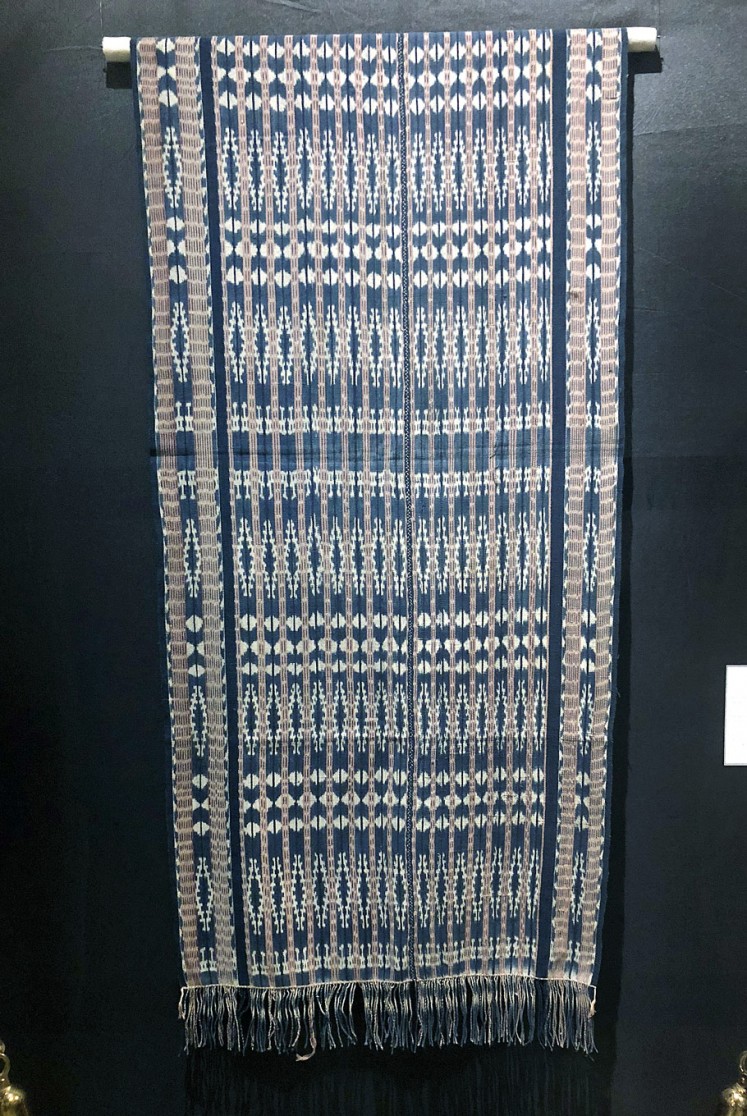Popular Reads
Top Results
Can't find what you're looking for?
View all search resultsPopular Reads
Top Results
Can't find what you're looking for?
View all search resultsTextile collector contributes Balinese batik to Jakarta exhibit
A retired Australian pediatrician shows his love for Balinese batik in a Jakarta exhibition of select pieces from his private collection.
Change text size
Gift Premium Articles
to Anyone
A
ustralian textile collector Dr. John Yu has been taking many trips to Bali over the last 34 years in order to find new pieces to add to his extensive collection.
Yu has now contributed a few select pieces from his collection to an exhibition running from July 12 to Aug. 5 at the Jakarta Textile Museum called Encounters with Bali: A Collector’s Journey. Yu has previously contributed pieces from his collection to exhibitions in Australian museums, such as at the Art Gallery of New South Wales and the Mosman Art Gallery.
Yu began collecting Balinese textiles, in particular Balinese batik, 34 years ago along with a colleague, Dr. George Bryce Soutter, who passed away in 2011.
Since then, he has collected over 900 batik and textile pieces from Indonesia. Although most come from Bali, Yu also has collected textiles from other parts of Indonesia, such as Lampung and Sumba in East Nusa Tenggara (NTT).
Yu explained the beginnings of his extensive collection of batik and textiles at a discussion workshop.
“During an afternoon in Sydney, I walked past a shop that had what I thought was a very nice blue scarf. I went in and asked the shopkeeper about that and he explained to me that it was a scarf — selendang — from Savu,” Yu said, referring to an island in NTT. “This was something I didn’t know about and that afternoon, [the shopkeeper] explained to me the differences of weaving techniques. Well, that afternoon I bought my first textile.”
First collection: The blue scarf is Dr. John Yu AC's first textile, originating in Savu and bought in Sydney, Australia. (JP/Audrey Cahyadi)This first textile that gave birth to his collection is called hi’i, a men’s shawl. Not surprisingly, it was one of first pieces he chose from his collection for the exhibition. The woven blue textile is worn with age and is one of the star attractions of the exhibition.
Born in 1934 in Nanking, China, Yu moved to Australia with his parents when he was 3.
After retiring in 1997 as a head pediatrician in Australia, he started to invest more of his time into his batik and textile collection.
Most collectors consider Balinese batik and textiles to be unique, because only a few Balinese weavers produce these woven crafts.
“Probably what makes Balinese textiles interesting is that they are strongly tied to the narrative tradition in Bali. [...] for religious purposes in Bali, textiles still play an important part. The religious practices and the stories or narratives that the textiles have really tie to other genres of performance in Bali,” said Siobhan Campbell, the exhibition curator and Indonesian art specialist from the University of Sydney.
However, Yu was mostly interested in the beauty of the textiles’ designs and weaving techniques. His collection was born from his admiration of the craft, not from their rarity.
One question that many visitors seemed to ask during the exhibition opening was how Yu managed to preserve the textiles for such a long time.
He admits that he does something that would upset any curator: he washes them before putting them on acid-free paper and stores them inside a plastic box.
Even though Yu may have washed his pieces, the batik and textiles remain as vibrantly colored as they were because of the natural dyes that were used in their creation.
Sole piece: The brown textile with wayang (shadow puppet) pattern is a unique piece, being the only Javanese batik displayed in the exhibition. (JP/Audrey Cahyadi)Among the many pieces from Yu’s collection on display is a single piece of Javanese batik hung on a wall. Originally from Garut, West Java, the light-brown kain rok (wrap skirt) is accentuated with dark brown patterns and blue wayang in their own patterned skirts.
Another eye-catching piece is an orange-and-brown woven short jacket, its collar embroidered with shells. This jaket upacara (ceremonial jacket) comes from Lampung and is usually worn by the adolescent daughters of a community leader during a ceremony.
A bright purple Balinese piece was another that many visitors admired, with its cartoonish rendition of a wayang embroidered in a variety of colors. The wastra songket (brocade wrap skirt) is one of the few brightly colored pieces among the more somber-colored pieces on display.
In closing the workshop, Yu said he hoped that the exhibit would allow all visitors to realize that many people outside of the country loved and valued the Indonesian culture just as much as the people of this archipelago.
Although Yu did not go into detail as to how he obtained his textiles, he stressed that he had taken multiple trips from Australia to Bali — exactly 33 times — to find and collect the pieces.
Those many visits allowed Yu to establish ties with the Balinese people; ties that now help him find the textiles he seeks.
“If you share an interest in textiles, you develop friendships and that’s going to be really important in the future for your country and my country,” said Yu.
—The writer is an intern at The Jakarta Post.
________________
Encounters with Bali: A Collector’s Journey
exhibit at the Jakarta Textile Museum is organized by the Australian Embassy in collaboration with Sydney’s Mosman Art Gallery. The exhibit is open to the general public from July 12 to Aug. 5.













